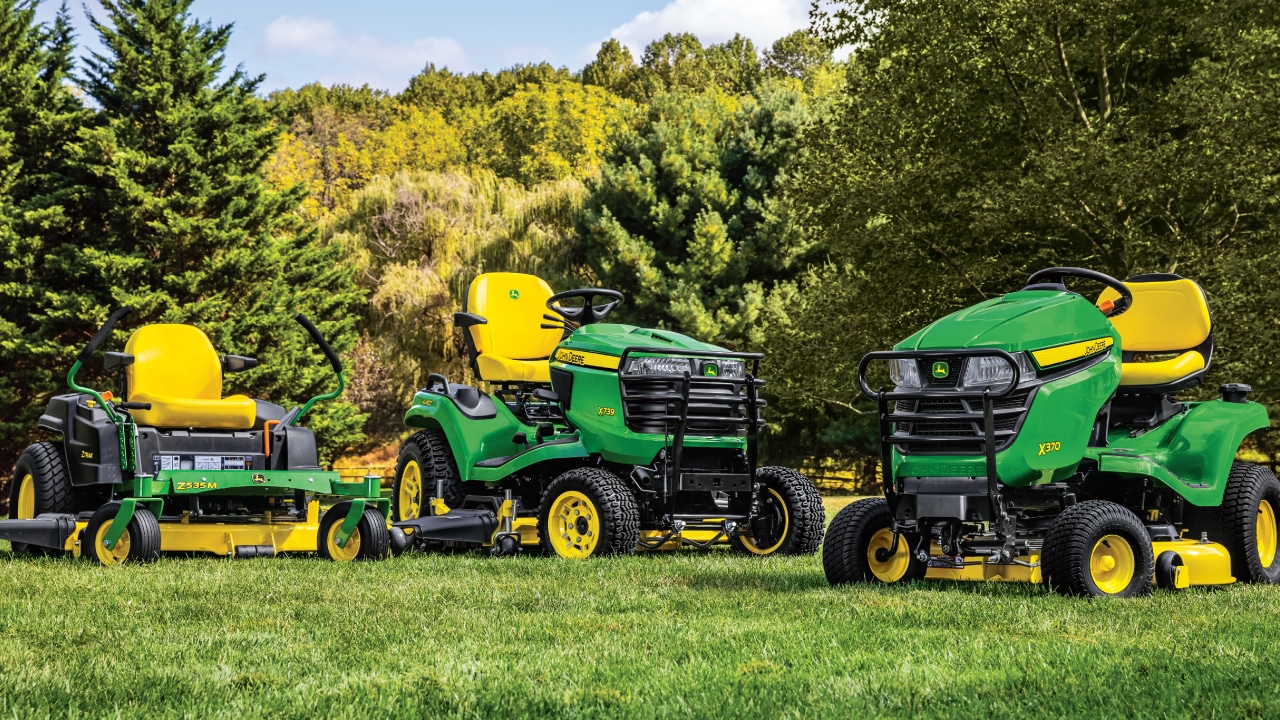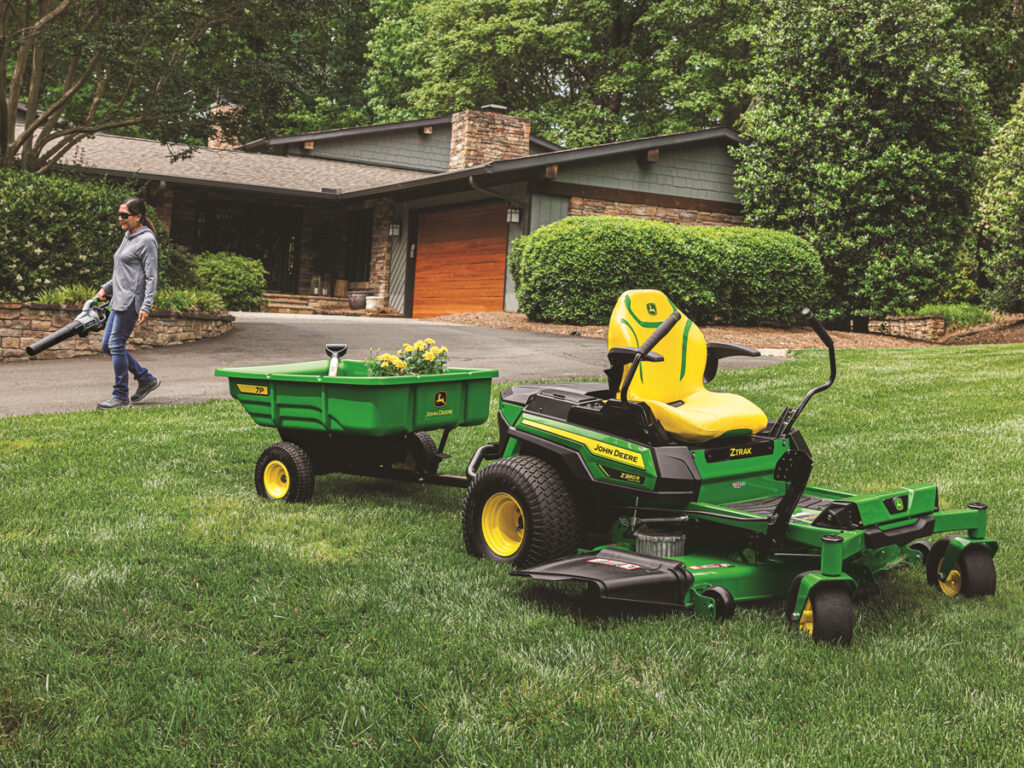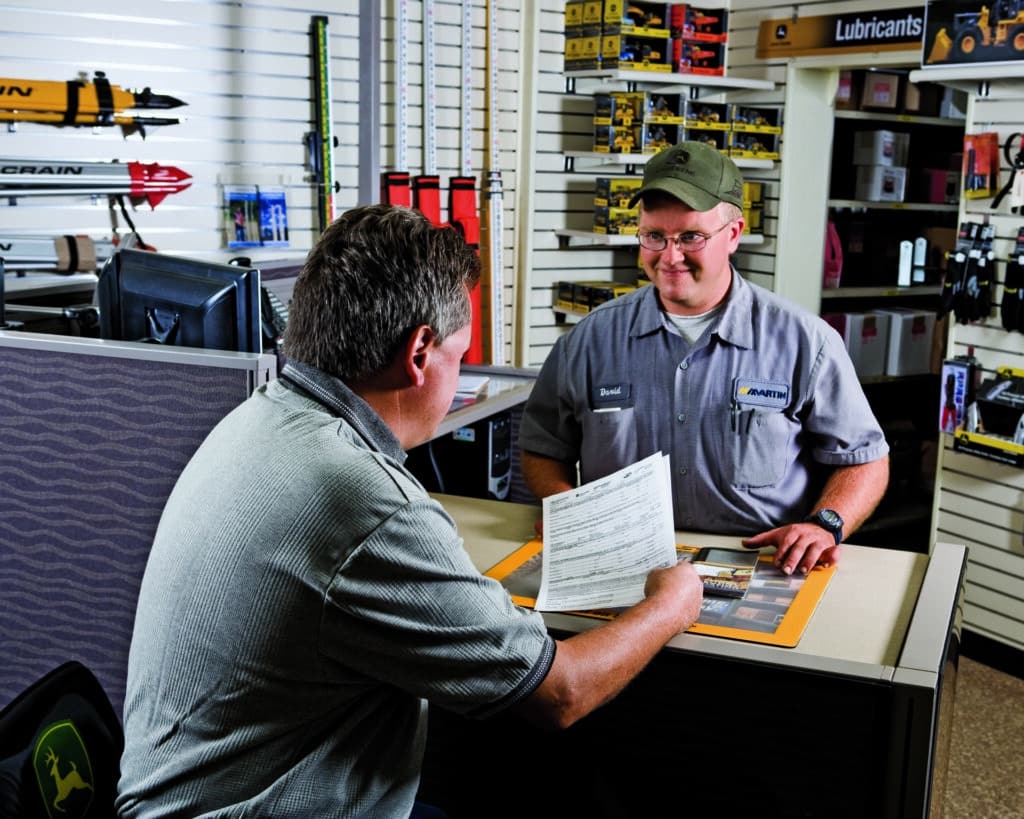
It’s time to bust out those jean shorts, tuck in your Twins shirt, lace up your grass-stained New Balances and don your “#1 dad” baseball cap.
That’s right: it’s grass-cutting season. The fresh smell of gas in red plastic and sounds of robins fill the air as you begin a new summer of Saturday morning lawn care. A gentle breeze weaves through the grass as you push your trusty mower to its station. The gas is primed, and the throttle is ready to go. You give your cord-pulling arm one last stretch before reaching for the handle. And then: nothing. Surely your form is still perfect. You give the mower one last pull before a plume of black smoke fills the air.
It’s time for a new mower.
If this story sounds familiar, and the season is starting off with a brand-new piece of equipment, you may find yourself asking, “How the heck do I work this thing?” Whether you are operating a riding mower, zero-turn or push, there are a few things to consider when getting to know your new yard equipment.
To Mow or Not to Mow?
One of the biggest questions people ask when working on their property is how often they should be mowing. A good rule of thumb is about once a week, depending on the type and length of grass; it is important to remember not to mow too often and risk cutting your grass too short. When cutting your grass remember the rule of thirds: only cut about ⅓ of the length of the grass blade, regardless of how long your grass is already. If you cut it any shorter, you can stifle the grass’ health and growth. In fact, the longer your grass is, the longer the roots will become, and the longer the roots are, the more the grass can absorb water and nutrients and the healthier it will become. The target length for a grass blade is anywhere between 3 – 3.5”. When in doubt, air on the side of caution and cut less of your grass to promote a healthy, green lawn.
Types of Mowers
Now that we know the basics of mowing and what our grass wants from us, it’s time to look at what tools we’re using on our lawn. There are many types of mowers, and Minnesota Equipment can help set you up with any kind that you feel is best for your needs. Let’s take a look at each and how to use them.
Riding Lawn Mowers
Riding lawn mowers are a great tool for many lawn and homecare needs. They are versatile and able to handle attachments such as mulching tools and even snowblowers, making them useful in a variety of ways around the house. While they are slower than zero-turns, they are comfortable to ride and are perfect for large expanses, especially in areas with a lot of hilly terrain, and can go uphill more easily than their zero-turn counterparts.
While all models of riding mowers are different, they all work in the same basic way. Similar to a gas-powered car, riding lawn mowers have an engine, battery and alternator to power it. Putting the key in the ignition and turning it to “start” will get the mower up and running. To get the blades running, your mower will either have a lever or button that will start and stop the blades. Press your foot down on the gas pedal, or push the lever forward, to start moving. Some riding mowers have cruise control features that allow you to go at a consistent speed while it is on.
Steering the riding lawn mower is similar to driving a car; riding mowers don’t turn as sharply as zero-turns, so be sure to learn how your equipment handles in all situations. To stop, simply take your foot off the pedal or adjust the lever back to its original position. Remember, all models are different, so be sure to consult your user manual to learn the ins and outs of your specific model.
Zero-Turn Lawn Mowers
The zero-turn mower is named due to the turning radius of the mower (you guessed it: zero degrees). These mowers make it easy to turn nearly 180 degrees with no problem. They are also faster than riding lawn mowers and can get around objects more easily. While they are quick and easy to use, steep sidehills aren’t their strong suit. Be sure to consider all aspects of your yard before making a decision.
To start your zero-turn, there are a few steps to take. First, the handle bars need to be in the neutral, or locked, position, which is pushed all the way out and away from the mower seat. Second, the emergency brake should be engaged, and the blades should be disengaged. Once the mower is in the proper positions, turn the throttle halfway up and the choke all the way up. Then, turn the key to start position.
Steering a zero-turn is a little different than steering a riding mower, but it is not very complicated. To go forward, simply push the handle bars forward, and toward you to go backward. To steer right, push the left bar further forward than the right. Do the opposite to turn left. The harder you push the handlebars in any of these directions, the faster and sharper you will move.
When you’re done mowing, shut the blades off, put the handle bars in neutral position (facing out) and engage the brake if equipped. Finally, turn the key to the “off” position. Many mowers have safety features in place that will automatically shut the mower off if one or all of these steps isn’t taken.
Push/Walk-Behind Lawn Mowers
Finally, there is the classic push — or walk-behind — mower. These mowers are nice for smaller yards or areas with a lot of obstacles such as trees, plants or lawn decorations. Though walk behind mowers take more physical effort to operate, they typically cost much less than zero-turns and riding mowers. Many push mowers have auto-drive features that help accelerate across the grass.
Push mowers start by engaging the mower’s clutch and quickly pulling the recoil cord. Once the mower starts, you can engage the automatic drive by applying pressure to the handle bar. Most mowers have a “personal pace” type drive which makes it easy to mow at your own speed. Even if a push mower has power drive features, it is important to still maintain control at all times.
No matter what kind of mower you’re operating, be sure to take the following safety precautions before and during your yard work:
- Be aware of your surroundings for any people or objects that can get in the way.
- Clear the area you are mowing before beginning. Objects lodged in your mower can cause damage to the vehicle or to others nearby.
- Use ear and eye protection when operating your mower.
- Monitor your mower’s fuel and oil and perform regular maintenance throughout the summer. This includes cleaning the mower and changing the blades if they are dull. You can also bring your mower into any Minnesota Equipment location for help.
Finally, you’re off and running! You’ll be back to getting your yard in tip-top shape in no time. If you’re looking for a new mower, or want information on which mower is best for your needs, check out Minnesota Equipment’s website or visit one of our four metro locations! We are ready to help with any and all of your lawn maintenance needs.


 MyME
MyME



